You are using an out of date browser. It may not display this or other websites correctly.
You should upgrade or use an alternative browser.
You should upgrade or use an alternative browser.
Reviews by frost15
Filters
Show only:
Loading…
frost15
100+ Head-Fier
Pros: - Elegant, tight, perfectly distributed bass.
- Outstanding timbre and dynamism rendition.
- Accuracy: notes stop and start when they should, which creates an incredibly realistic sound, specially in live recordings.
- Soundstage and depth unheard of in closed-back cans. Music meant to be played in big theaters or audiences in general is unbeatable (classical, some jazz recordings, soundtracks, etc…).
- Perfect balance between detail and musicality. Instrument separation is unreal, yet it never ends up being too analytical.
- Vocals: Quoting John Massaria “liquid, intimate when recordings call for it, wet when recordings reveal such wetness”. And throwing in my two cents: explosive & vibrant when recordings call for it as well, such as in soprano and operatic voices in general.
- Unique, non fatiguing, immersive, addictive sound signature.
- Comfortable for long periods, (upgraded soft ear pads made of lambskin).
- Aesthetically gorgeous: heirloom wood finish, hand-crafted, laser engraved logo.
- Outstanding timbre and dynamism rendition.
- Accuracy: notes stop and start when they should, which creates an incredibly realistic sound, specially in live recordings.
- Soundstage and depth unheard of in closed-back cans. Music meant to be played in big theaters or audiences in general is unbeatable (classical, some jazz recordings, soundtracks, etc…).
- Perfect balance between detail and musicality. Instrument separation is unreal, yet it never ends up being too analytical.
- Vocals: Quoting John Massaria “liquid, intimate when recordings call for it, wet when recordings reveal such wetness”. And throwing in my two cents: explosive & vibrant when recordings call for it as well, such as in soprano and operatic voices in general.
- Unique, non fatiguing, immersive, addictive sound signature.
- Comfortable for long periods, (upgraded soft ear pads made of lambskin).
- Aesthetically gorgeous: heirloom wood finish, hand-crafted, laser engraved logo.
Cons: - First and foremost: YOU HAVE TO BEND THE METAL BAND to get a tight and comfortable fit for the proper, intended sound. The horn design is very sensitive to headphones head position, so having such a clamp is a MUST to get their true sound. Bending the metal band is a tedious task that should be done with certain precautions (using both hands, all cables detached…) but do not bend it shyly or otherwise you won’t get the perfect fit. Once it’s done it’ll last forever -see review
- Supplied cable is useless (even though it’s indeed very high quality) if you don’t have a 6.3mm headphone adapter (and I don’t even recommend those because they are prone to destroy jack outputs).
- Microphonic headband if touched while wearing (which happens very rarely but still…).
- Highly recommended break-in (burn-in) of 75-120 hours in order to have an optimal sound reference.
- Revealing when it comes to bad recordings. If there is an imperfection you will almost certainly notice it straight away.
- May lack frontal impact for some genres intended to punch you in the face. - see review.
- Mids can be "funny" in mid-range rich music. I think they go hand in hand with the uniqueness of the JM horns sound signature (depth - some instruments sounding more distant than others for example) but some people may think otherwise... - see review
- Supplied cable is useless (even though it’s indeed very high quality) if you don’t have a 6.3mm headphone adapter (and I don’t even recommend those because they are prone to destroy jack outputs).
- Microphonic headband if touched while wearing (which happens very rarely but still…).
- Highly recommended break-in (burn-in) of 75-120 hours in order to have an optimal sound reference.
- Revealing when it comes to bad recordings. If there is an imperfection you will almost certainly notice it straight away.
- May lack frontal impact for some genres intended to punch you in the face. - see review.
- Mids can be "funny" in mid-range rich music. I think they go hand in hand with the uniqueness of the JM horns sound signature (depth - some instruments sounding more distant than others for example) but some people may think otherwise... - see review
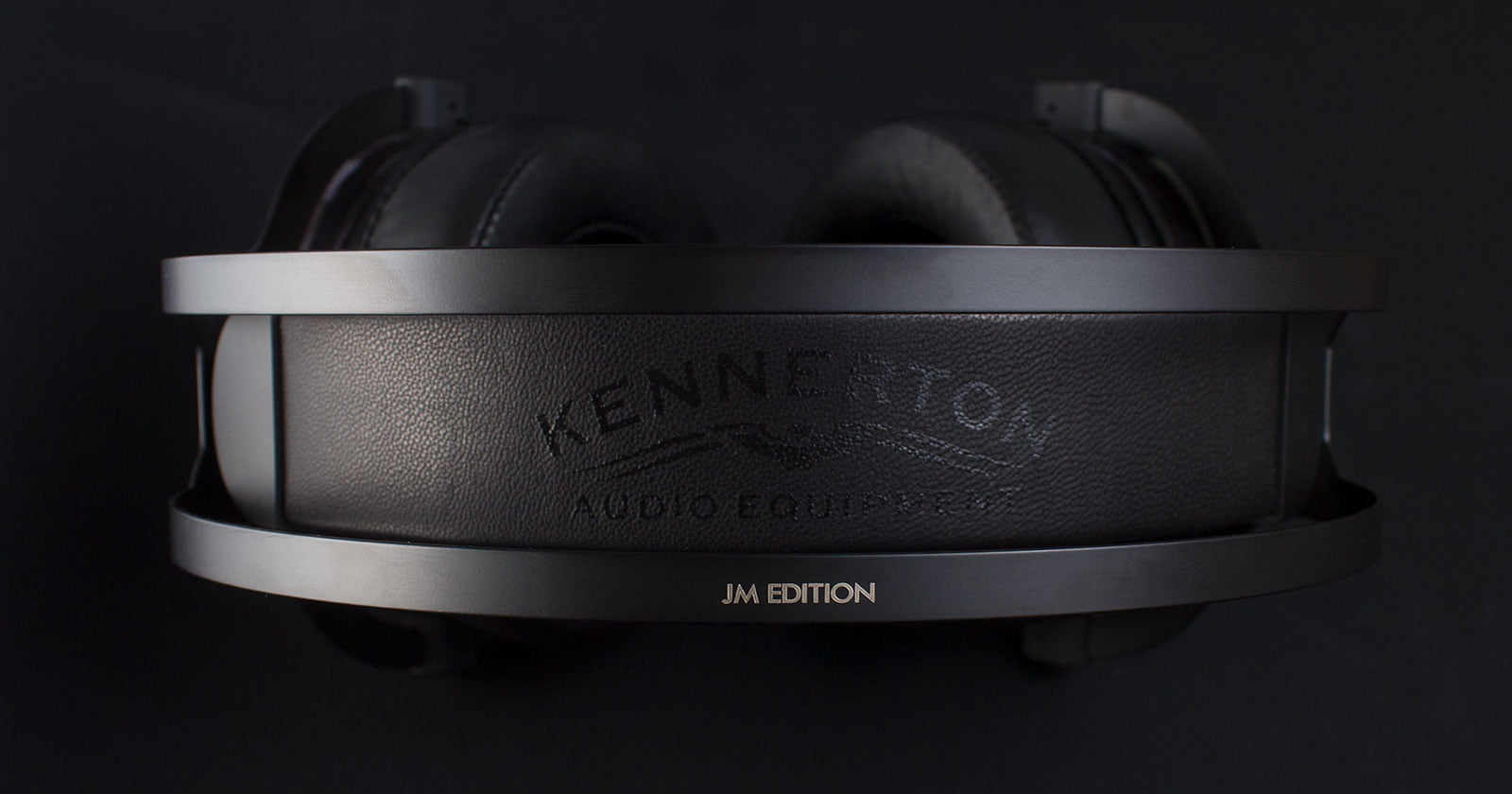
From the author’s web page: JM Edition is an acoustic modification of Gjallarhorn headphones, which was made by John Massaria, one of the first owners of Gjallarhorns. We considered it quite worth to be a separate model and now we are offering you the official Kennerton workshop version of it.
You can read in depth about the modifiacion from the first hand, from the author himself.
The main differences touched the bullhorn form and change of phase inverter. It did significantly changed the accent of the sound of the headphones without dropping any quality at all.
We named the model after the author, JM Edition.
Since the main goal of this review is to talk about the sound I will not go into detail about the design and development process. You can read about that in Kennerton’s web here https://kennerton.org/shop/gjallarhorn-jm-edition-dusk/ (trust me, the graphene membrane technology and the horn specs, among other things, are interesting things to read).
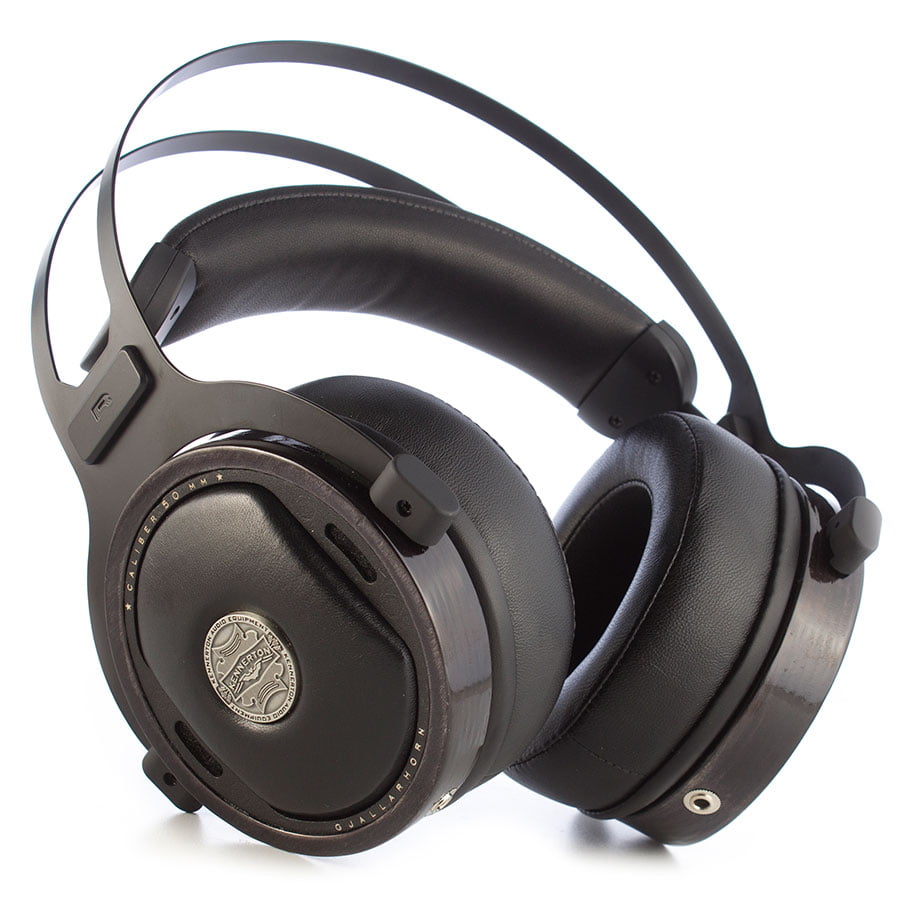
Also, I want to mention that from this point on I will refer to these cans as the JM horns.
I will say though that aesthetically these are one of the most beautiful headphones I’ve ever seen. Their wooden finish, leather pads and Kennerton’s logo metal pin on each side make them so beautiful that everyone around you will notice sooner or later.
For the purpose of this review I used a Sony NW-WM1Z (Modded) as source (balanced output), the JM horns were connected through a 4.4mm balanced OCC cable and all music was played in FLAC (default for this review) (I will specify bitrates and bitdepths when necessary) and Native DSD (will specify). I always aim to keep the audio chain as short as possible so no amp or “middle chain” devices, just source and headphones.
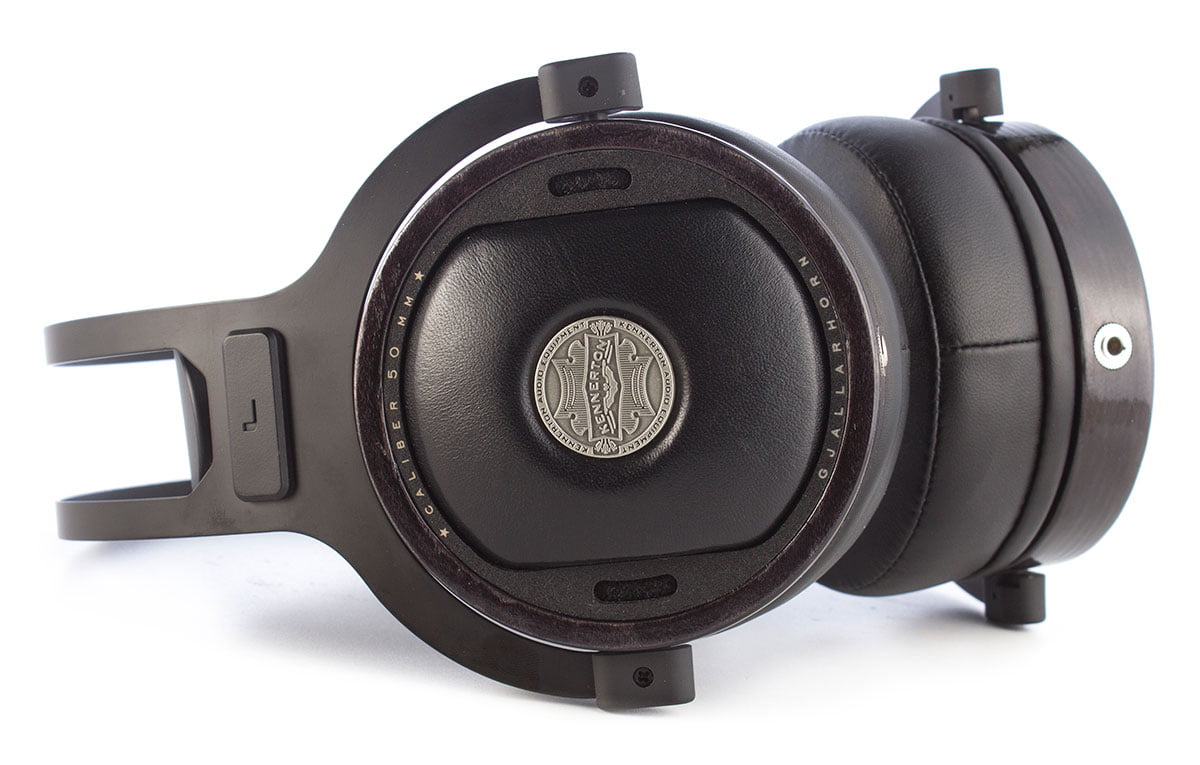
Let’s start then. So, what do we get when we buy the JM horns apart from the headphones. Well, we get a very nice, genuine leather case, a high quality cable with 3.5 mm rhodium plated connectors and gold plated 6.3 trs connector and a strap to comfortably carrying the case. I’ve used the leather case (strapped) to carry the JM horns and my DAP (Sony NW-WM1Z) and I can say everything fits perfectly. There are two inner pockets where I can store the DAP and a set of cables separately and then put in the headphones, and everything feels safe and sound.
The stock cables are a bit useless unless you have a 6.3mm to 3.5mm (or 4.4mm, or whatever you use) adapter and I really missed the option to choose a different cable or to have an adapter included. I ordered an Audiocrast HIFI 8 cores 7N OCC cable from AliExpress and I couldn’t be happier with it.
The first thing I noticed out of the box was how comfortable these headphones were, yet the clamp wasn’t great and they tended to move up and down too much, which generated a kind of inconsistent sound. I found myself re-adjusting the cans too often and it became a bit problematic. That’s when I realized how important is to bend the metal band just like John Massaria specified in his review. At first I went a bit shy on the bending and I did not like the results I was getting, then I went too strong and the clamp was too hard. It was a tedious task and it took me about 2 hours of different bending angles to find the sweet spot, but once I found it was pure bliss sonically and comfort wise.
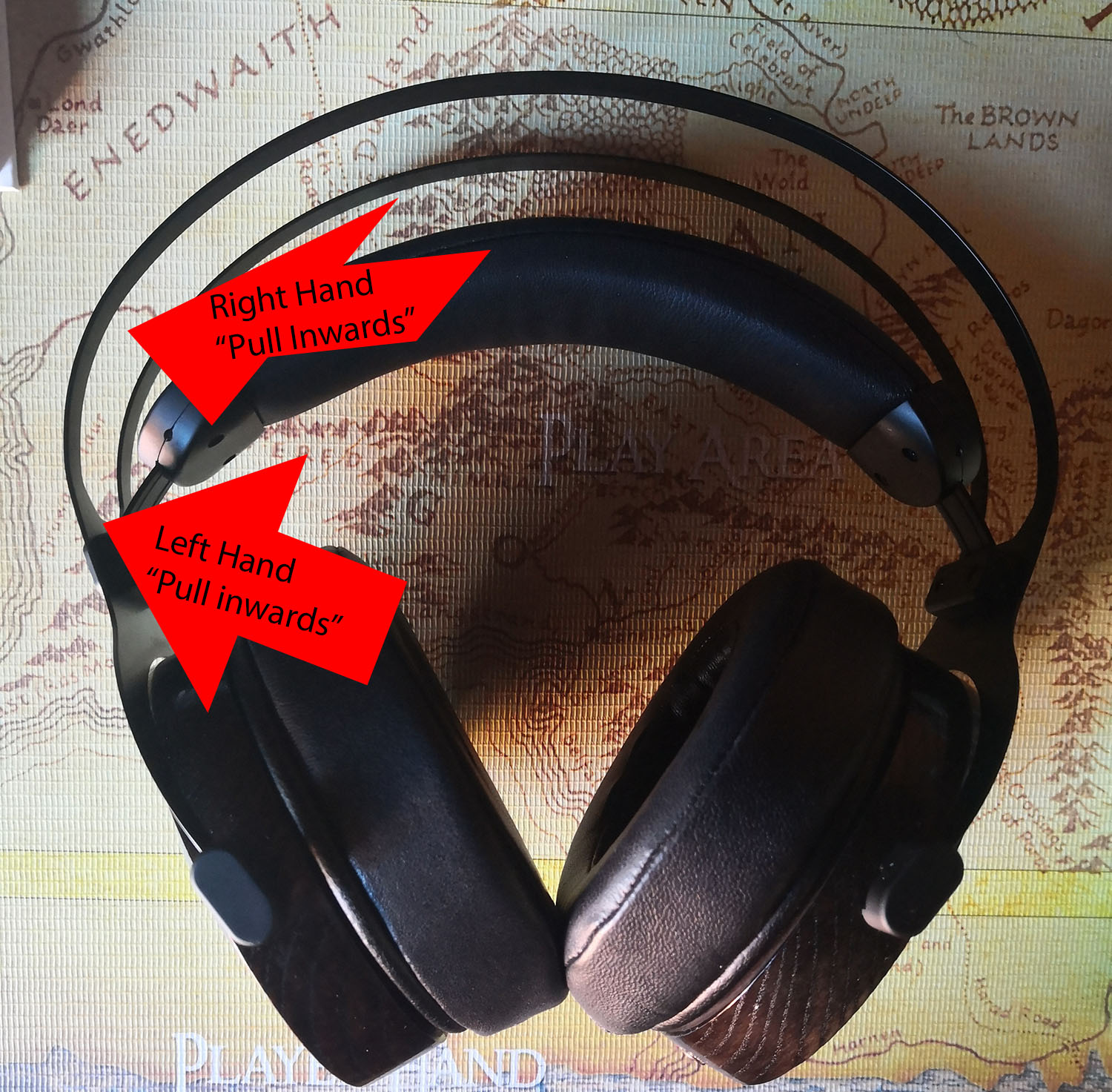
The bend should be done with both hands simultaneously, pulling inward at the same time shylessly. Repeat the operation on both sides. Test the clamp and re-bend outward/inward to find the right spot.
The cans are weighted at 406gr, but once you find the right clamp they’ll feel lighter than that. I can now wear them for 4 hours non-stop with no problems.

This is how my JM horns look right now. A bit crazy, but it’s a must for all sound related purposes.
Speaking of the sound, out of the box the cans sounded a little bit bright and bass-shy, and the midrange was weird in a funny way, yet I was already blown by the depth and soundstage, simply unheard before in closed back cans. I then proceeded to the burn-in process. I burnt them for 20 hours before testing them again, and I kept doing the same thing for 4 times until they reached the 80 hours mark. I reckon the most significant change happened around the 60hr mark, where something just clicked in my head. It could be placebo, it could be the adaptation process but at that mark everything started to sound cohesive and unique in an incredible way. Before, I wasn’t fond of some midrange sounds, such as snare drums (which sounded a bit muffled and kind of distant for my taste), but from the 60hr mark my mind changed completely. Everything started to sound so good that when I went back to my Shure 1540’s (very precious headphones to me) I just could not believe the difference. In some genres (rock, metal and pop) the Shures were sounding kind of lifeless and flat now… really flat. And when it came to classical music the Shures sounded just bad! That was an inflection point. The JM horns had completely won me over.
It’s from this point I started to review the sound seriously and everything from now on is written with the sound I got after the 80hr burn-in mark in mind and the metal band bent perfectly, which is key for the purpose of optimal, perfect sound.
Before delving deeper into the sonic aspects I should mention here that the JM horns are extremely easy to drive. At just 33 Ohms of impendance you can plug them pretty much anywhere and they will be easily crankable and enjoyable. You don’t really need an amp with these, which is a pro in my book.
Soundstage, imaging and depth
When we think about closed back cans we imagine good bass response, good noise isolation and hard impact. Well, the horns have arrived to completely change the game. We still get good bass response (perfect, actually) and good noise isolation but we trade a bit of that front impact for great soundstage and imaging, and incredible depth. It’s the first thing I loved about the JM horns. It caught me completely by surprise because I was just not expecting that level of layering and separation from a closed back. Music recorded in small halls, chamber music and music where the soundwaves hit walls sooner is reproduced with such realism you won’t believe it. The combination of the pinpoint, perfect timing of notes, the reverb, the soundstage and the depth makes you easily imagine where the instruments are being played, their size and how big is the hall, theater, club or whatever the place. Other types of music like metal and rock also benefit from this in different ways. For example fast drumming or percussive tracks that use stereo imaging are very, very pleasant to hear with the JM horns. This all comes without any significant loss in musicality. Actually this sound signature is very immersive in its own, unique way. If you feel analytical you will easily be able to do analytic listening given the excellent instrument separation, but should you change your approach and decide to just enjoy the music, you will be able to do that as easy. Carefully mastered and produced recordings such as anything Steven Wilson’s hands touch will sound sublime with the JM horns, but I will close this chapter warning everyone that having this amount of detail, layering and separation comes at the cost of noticing bad recordings straight away. If a recording is poorly done you will certainly notice.

This is the perfect scenario for the JM horns to do their magic.
Let’s talk about bass, midrange and treble response now. I don’t judge sound based on graphs and numbers. That’s all interesting tech talk but in the end the most important thing for me is how I feel when I close my eyes and listen to the music. How far can these headphones take my mind? Do I feel like I’m in the audience? Does the singer sound like if he/she in my room?! Do I feel the bass or is it just overreaching and distorted? Can I hear and feel the electricity coming from the electric guitar? Those are some of the instinctive questions that look for an answer when I listen to music, so let’s go for it:
Bass
The first thing I noticed about bass was its elegant, perfect separation, tightness and detail. We live in a day and age where bass is often played exaggerated and overblown to a point it’s just completely distorted. Many people can’t “feel” the bass anymore unless it’s completely overblown, and I really dislike that. The way the JM horns cast bass is simply perfect for my taste. It’s the most naturally realistic bass I’ve ever heard. For example, when I was listening to Vivaldi’s ‘L’estate Presto’ by Rachel Podger [DSD] and the violoncello entered the scene it sounded EXACTLY like a real violoncello. Also on Miles Davis’s “Bitches Brew” [DSD] the bass line is perfectly heard, tight, with each pluck discernible from the next. It’s the type of bass that you feel in your body not by distortion or loudness, but by it’s extended, natural frequency. You feel it’s huge and you know the size of the instrument it’s coming from. Truth be told, string instruments in general are simply fantastic on the JM Horns. I don’t know if it’s the nature of the wooden horned acoustic chamber but they sound so real it’s unbelievable. When we move to electronic music bass the low frequiencies keep its qualities. In Die Antwoord’s ‘Pitbull Terrier’ or Igorrr’s ‘Hollow Tree’ for example the bass is huge and tight when it hits, you feel it all over, but it’s not in your face. You are not next to the huge rave speaker, but in the second row, and that’s something you should be ready to expect. These headphones are elegant and never punch you in the face. They don’t want “blood on your hands” or ears, they want you to feel and see everything, from the size of the instruments to the width and depth of the stage, so they take you one or two rows back to give you the whole picture. You keep feeling the impact but in a different way. At first I did not know what to think of this but now I simply can’t go back to the front line, “I want to keep driving the Mercedes
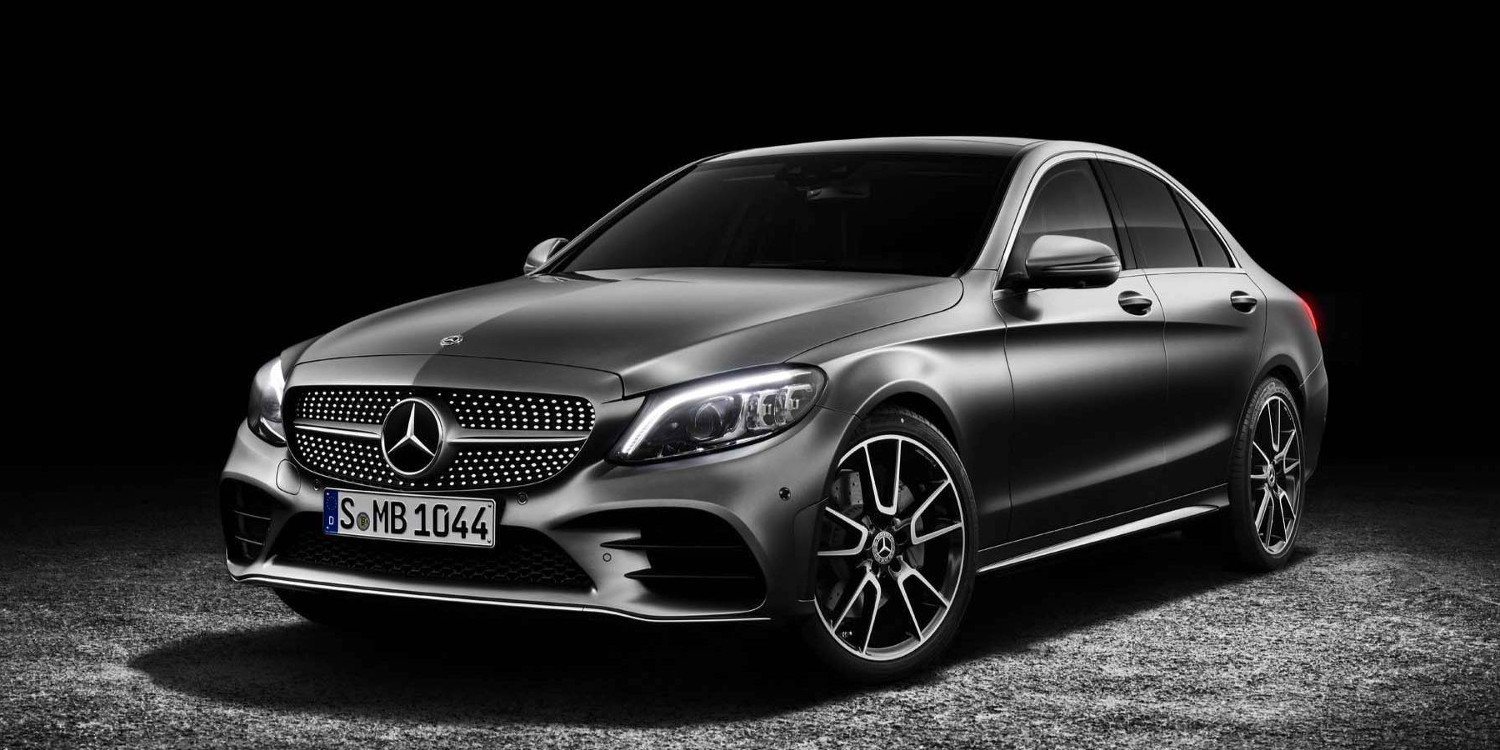
instead of the Monster Truck”

and I’ve found out I’m more comfortable sitting a few meters back from the front line of the jazz club,

cup of wine in hand, enjoying the bigger picture. Atmospheric music with huge bass gets the best of the horns. Soundtracks specially are end-game level with the JM horns. Take Star Wars III ‘Anakin vs Obi Wan’ [24 bit], every time the bass enters in the scene I get goosebumps. Trust me when I tell you things can get really huge and immersive with the JM horns if the music calls for it. My friend was so moved by the horns performance with the Star Wars OST that he assured it was like hearing it in a big theater again. Now take a bass heavy metal album like Sunn O)))’s ‘Monoliths and Dimensions’, well, it sounds like I feel it was intended to sound; Like being played from a huge, deep, dark cave in the center of the earth. The “twisting, creaking wood” sounds on the first track are creepier and unnerving than ever. A completely cathartic experience. Of course all of this should give you an idea of how great they are for epic/fantasy/action movies/videogames... I could keep talking about the bass section but I don’t want my review to reach biblical proportions (I’ll fail anyway…) so I’ll leave it here. I hope I have made myself clear so you have an approximate idea of what to expect. Summing it up, the bass is perfection for those who like natural, tight, extended bass that's felt for all of those qualities and nothing else.
Mid-range
Midrange on the JM horns is the most debatable aspect of their sound signature. Depending on the type of music, mids can be close to perfection or weird in a funny, totally enjoyable way. Igor Boitsov’s review aimed most of its criticism to the mids, calling them out for being uneven. I can totally see why. When I started the sound tests I remember I experienced a problem with the mid-range similar to what he describes as “some mid-range sounds heard as if from a distance” and “some mid-range instruments give the impression of a low-frequency component removed from their sounding”. The second problem was fixed when the clamp was good (remember to bend the metal band like Beckham!, a step which I think Boitsov’s skipped judging by the pictures of his review).

Now for the first problem, I remember that perception improved with the correct clamp as well. It was only noticeable in busy midrange music, where two or more instruments are “competing” for protagonism along the same range of frequencies, and after listening to the JM horns for so many hours I don’t know if that “problem” is part of the amazing depth they are able to create, to the extent I barely “hear” it anymore, or maybe I just don’t care, at this point I don’t know. I am well aware Dire Straits ‘S/T’ album sounds a little bit different now. The midrange sounds deeper and sometimes more distanced in the vocals department, but I really like it. In my mind it just makes sense for the music to gain that layering and separation. It creates a livelier sound that may decrease the perceived “warmness” of some records. It happened to me while listening to one of my fav prog rock albums of the last decade, Opeth’s ‘Pale Communion’. It’s a mid-range rich album and it sounded more detailed, deep and separated than what I was accustomed to. At first I found it a bit weird but repeated listens made me appreciate things I wouldn’t have been able to appreciate if I had not listened to it through the JM horns. It’s definitely a different listening experience for sure for mid-range rich music. When the mid-range is more focused and controlled and there is no battle for the attention spot these cans manage to deliver things with a delicate, yet full bodied taste. They somehow read the intended atmosphere of the recording and reproduce it. This is specially palatable in the vocals area. Listening to Becca Stevens sing in Ambrose Akinmusire’s ‘Our Basement’ [24bit/96khz], from his masterpiece , ‘The imagined saviour is far easier to paint’, is the perfect example for this. The chorus vocals remain back in the sides giving Becca’s sweet voice the attention spot. Paraphrasing John Massaria, vocals are “liquid, intimate when recordings call for it, wet when recordings reveal such wetness”. If you close your eyes with Johnny Cash’s ‘American IV’ you’ll be surprised to “see” Johnny playing for you in your room, for real. JM Horns cast the best reproduction of Johnny’s voice I’ve ever heard, goosebumps all over the place. So, what happens with explosive, vibrant voices then? Well, the JM horns are great playing them as well. Listening to Simone Simons in Epica’s ‘The Divine Conspiracy’ I heard a vibrance, and timbre in her voice I had not ever heard before. That album in general sounds outstanding because, let me tell you, the horns were made to play epic symphonic arrangements. Not to anyone’s surprise brass instruments (specially instruments) sound just like they were meant to sound. And mixing them with ‘epicness’ (like in soundtracks) is the perfect combo for the horns to shine. When it comes to heavy brass jazz the horns shine, specially in live recordings, but be warned once again, do not expect to be in the front line and hearing the trumpet right in front of you, the JM horns will take you to a table a bit behind in the jazz cafe to enjoy the show from a safe distance. John Coltrane’s ‘Blue Train’ [DSD] sounds just like it’s being played exactly from that distance. When it comes to more energic and aggressive music such as rock and metal (favorite genres of mine by the way) the JM horns perform great in the mid-range section. The layering and depth makes artists with “big sounding” productions (lots of guitar reverb, echoing and such effects) sound HUGE, like if playing in a huge festival stage with no crowd, which makes the sound travel freely and clean. Sometimes I also imagine myself witnessing the band playing in a huge studio. It’s truly an immersive experience. Rush’s ‘Moving Pictures’ or Devin Townsend’s masterpiece, ‘Ocean Machine’ are the first examples that come to my mind. Then with genres such as death or black metal you will soon realize that, without the JM horns, your death metal is suddenly not coming from the catacombs anymore
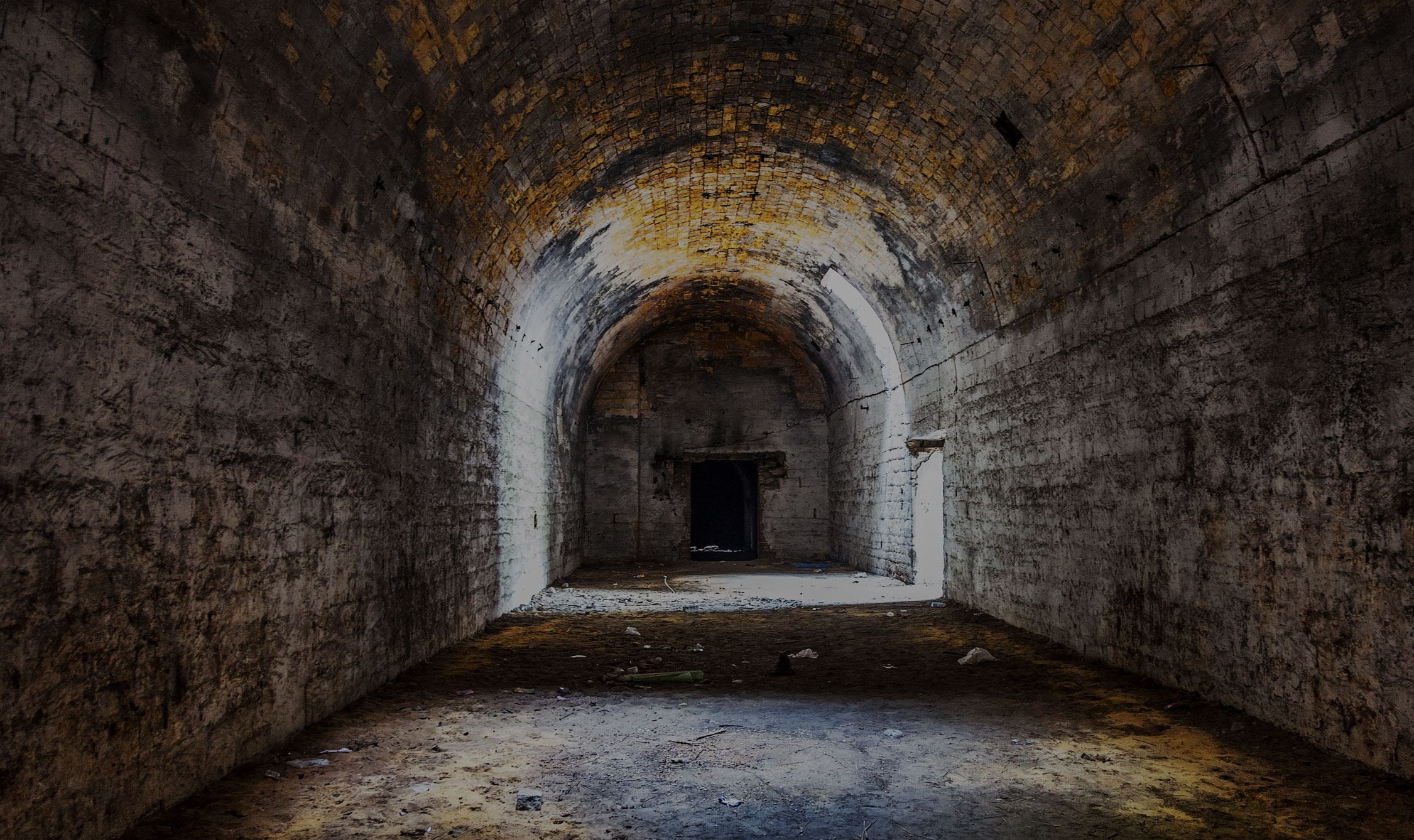
and black metal will lose its windy coldness

or its dungeon like aura,
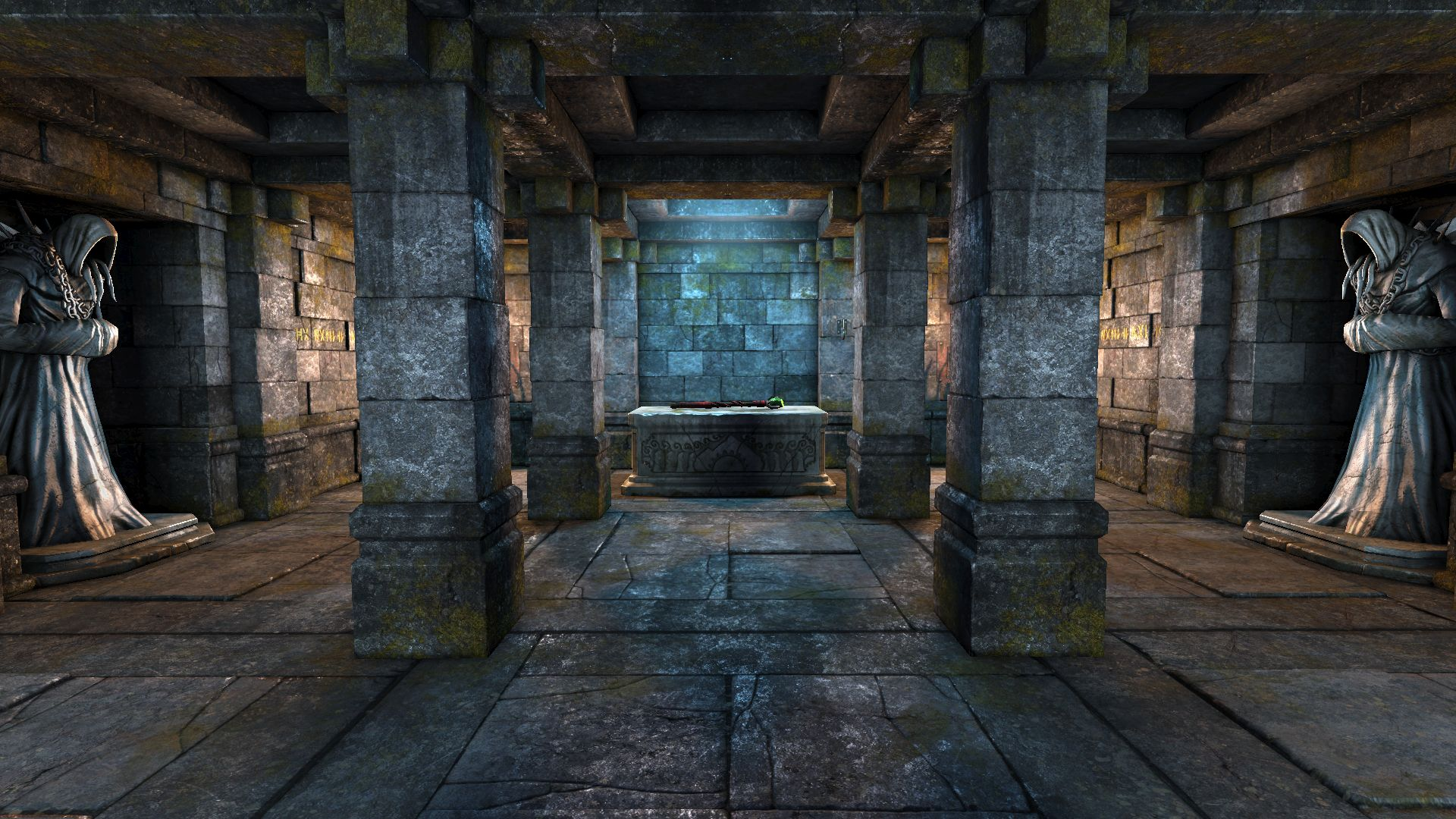
and do not get me started on how the JM horns work with prog/tech death metal... I completely rediscovered albums like Dead Congregation’s ‘Grave of the Archangels’ or Deathspell Omega’s ‘Si Monvmentvm Reqvires, Circvmspice’ (specially when the Gregorian chant comes at the mid section of ‘Carnal Malefactor’, the atmosphere was so greatly improved I got lost in it, again proving that human voices are read perfectly by the JM horns). For the first time ever I was able to discern everything in Defeated Sanity’s ‘Passages Into Deformity’ and keep enjoying it. Alkaloid’s ‘Rise of the Cephalopods’, which is one my favorite metal songs ever, gets to a whole new dimension with the JM horns. Aggressive electric guitar genres like Thrash Metal and Metalcore sound awesome too. Guitar lines are delivered fast, vibrant, tight and with perfect precision. Slayer’s ‘Reign in Blood’ invites you to raise the volume and enjoy the hell out of every single wave of electricity coming from its guitar tracks. Besides, the horns makes the rock of bands such as U2 or Oasis shine in all of their glory. Flamenco is another genre that gets the blessing of the JM horns to sound as good as it gets, transporting you next to the ‘tablao’ to enjoy its intricate guitar melodies and vibrant ‘cante’. Listening to Paco de Lucía and Camarón de la Isla joining forces in ‘Como el agua’ is greatly improved by the horns, giving it a very colorful, live and vibrant vibe that is really hard to beat. Summing it all up, the midrange will possibly be the most disputed aspect of the JM horns. It’s influence vary from genre to genre and even from song to song in some cases, but in my experience it’s never a deal breaking experience, on the contrary I feel it makes a lot sense given its peculiar sound signature. In the end it will be up to each person to decide if they like it or not, but I think it wouldn’t ever be a decisive hindrance.
Treble
Usually I don’t pay much attention to treble, but I consider its qualities to be fundamental for a headphone to sound good. If it’s not worked on properly certain treble problems can be an instant no for me. I usually like a treble that is present enough to give a natural, lively sound without going too much into the bright side of the force. I also hate treble shy sound signatures, they sound really unnatural to my ears and ruin everything else for me, so I was really, really pleased when I found that the treble of the JM horns felt actually close to perfect. I’m in absolute love with the hi-hats and cymbals sound, which are heavy in the genres I listen to the most (rock and metal). Also the kind of high frequency sound from percussive hits and clangs from objects such as kitchen cutlery hitting plates and sounds of that sort is so real it’s almost scary. It’s the kind of realistic treble reproduction that could pass for a real object noise in the room you are. Again, the pinpoint precision of the reverb and echo is key to reach this level of detail. Miles Davis “Sketches of Spain” [DSD] treble dynamics completely passed the test with the JM horns, which made the album sound totally alive! I also did the What Hi-Fi treble test and I was really glad to hear the JM horns passed it with not a single problem. I also realized during this test how amazing the piano sounds with the horns as well (that Keith Jarrett’s track sounded absolutely fabulous!). There seems to be a peak at 11khz mentioned in Igor Boitsov’s review. I went on and tested the material he provided to proof his point, but after testing the same material with two other pair of headphones I came to the conclusion that it was more of a recording problem than a JM horns treble frequency response peak one. So all in all I give the treble a close to perfect score. It makes everything sound spacious and lively without ending up too airy sounding. I’ll repeat now that due to its treble, along with depth and separation, the JM horns will lift the warmness veil from some recordings. These recordings won’t sound bad at all but they will surely sound a bit different and more live-like. To get finished, the excellent treble reproduction is just the icing on the cake for these cans, period.

Conclusion
The Kennerton Gjallarhorns “JM Edition” are a triumph for innovation, a victory of concept design. It’s not easy to design headphones based on a new, never seen before concept, and Kennerton have not only succeeded, they have surpassed all expectations with these cans, creating one of the best sounding headphones ever. I’m right now on John Massaria’s train, these are the best sounding headphones I’ve ever heard and they have the King’s crown for me. I think we’ll be seeing more horned headphones designs very soon, but these Kennerton’s Gjallarhorn cans will always be in the history books as the proud, marvelous sounding pioneers of that concept.
Last edited:
immortalsoul
Hi, did you tried the Magni? I want to buy a closed back headphone and I listen to mostly death/ technical death metal/ progressive death metal. You can answer me in a PM. Thank you!
frost15
Well guys, after almost a year since I wrote this review I thought I would say something! First of all, I'm still rocking the hell out of these cans, they are still my fav headphones ever (I spend a lot of time listening to music so the burn in count is well over 6000 hours now haha!). As I have stated before I don't feel I need anything else anymore. I'm set up for life (as long as my device and cans stay alive haha, but I take very good care of both so...). Everytime I try other headphones I miss some aspect of the sound signature of the JM horns. They are that good imho ladies and gentleman. The aspect that still captivates me the most is the spacious, huge studio like sound despite being closed back cans. It's simply mindblowing. Music is just a different experience with these. Hope you all are still enjoying them aswell.


